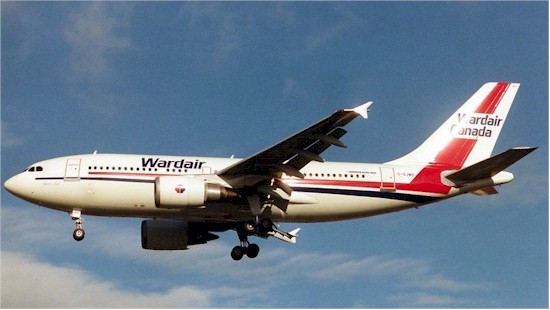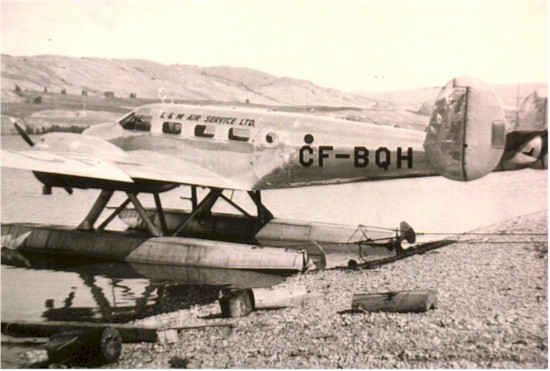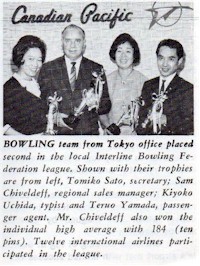|
CAIL replaces DC-10 fleet. The most likely replacement aircraft will be the Boeing 747 Combi, which carries 200 to 250 passengers and up to 40 metric tons of freight. CAIL now has 13 DC-10's in its fleet. "In many of our markets, we would be better positioned with far bigger cargo capacity," says Ken Gray, CAIL's Vice President of Cargo. “The Pacific Rim cargo market is growing at a rate of 25 per cent a year and projections are that it will increase by an average of 13 per cent annually in the next decade”, estimates Gray. "By 1995, air cargo will account for about 42 per cent of worldwide cargo movement in and out of the Pacific Rim." (Source: AC "Horizons" magazine issue November 1987) |
|
Wardair expands fleet. Wardair announced the second phase of a major aircraft purchase that is bound to stir up competition in the already competitive market place. |
 |
|
Vancouver International Airport (YVR) That exercise in logistics, phase 1 of the move into the $24 million structure, was completed on schedule December 1, 1969 nine weeks and four days after it began. It was carried out virtually without a hitch. Only one piece of equipment wouldn't fit through the doors and that was a piece of test equipment called a load bank. The problem was solved by cutting a couple of feet off one end and welding it back on later. Additional info from cpair.blogspot.com |
|
Shown with their trophies are from left: Tomiko Sato, Secretary; Sam Chiveldeff, Regional Sales Manager; Kiyoko Uchida, typist and Teruo Yamada, Passenger Agent. Mr. Chiveldeff also won the individual high average with 184 (ten pins). Twelve international airlines participated in the league. (Source: CP Air Newsletter December 1969) |
|
Neil Burton has sent this information regarding Beech A18A, CF-BQH, which at one time served with CPA and PWA. |
 |
|
Graeme Shelford shares this information with us - In 1990 the Federal Government sent Canadian Airlines a Request for Quote (RFQ) to overhaul CF6-50 engines for the USAF E-4B Command Post fleet of 4 B47's. These are the communications aircraft that follow the President around when he flies anywhere on Air Force 1, and one becomes Air Force 1 if the President boards it in an emergency. The RFQ specified bidders from the lower 48 states only, but Ottawa assured us we could bid as they owed us offsets from the CF-18 purchase for the RCAF. Thinking that we stood absolutely no chance of winning such a high profile contract, we bid high to cover the extra administration and paperwork we were sure a USAF contract would involve. As part of the process, a group of USAF generals turned up to examine our engine shop. Their attitude clearly conveyed that we were nuts to even think that we would be allowed to overhaul engines for the presidential fleet. But after showing them around and explaining what we had done to improve the fuel consumption of our CF6-50's, they shook our hands warmly as they left, saying, “We’ll be seeing a lot of you”. We had won the contract. Before long, accolades poured in from the USAF for both the quality of engines delivered to them and the cost. Apparently we were 30% lower than their previous contractor, and it still proved very profitable for us. |


